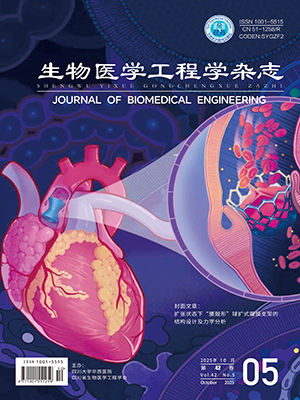| 1. |
Megía García A, Serrano-Muñoz D, Taylor J, et al. Transcutaneous spinal cord stimulation and motor rehabilitation in spinal cord injury: a systematic review. Neurorehabil Neural Repair, 2020, 34(1): 3-12.
|
| 2. |
Ladenbauer J, Minassian K, Hofstoetter U S, et al. Stimulation of the human lumbar spinal cord with implanted and surface electrodes: a computer simulation study. IEEE Trans Neural Syst Rehabil Eng, 2010, 18(6): 637-645.
|
| 3. |
Rahman M A, Tharu N S, Gustin S M, et al. Trans-spinal electrical stimulation therapy for functional rehabilitation after spinal cord injury. J Clin Med, 2022, 11(6): 1550.
|
| 4. |
Tharu N S, Alam M, Ling Y T, et al. Combined transcutaneous electrical spinal cord stimulation and task-specific rehabilitation improves trunk and sitting functions in people with chronic tetraplegia. Biomedicines, 2022, 11(1): 34.
|
| 5. |
Moritz C, Field-Fote E C, Tefertiller C, et al. Non-invasive spinal cord electrical stimulation for arm and hand function in chronic tetraplegia: a safety and efficacy trial. Nat Med, 2024, 30(5): 1276-1283.
|
| 6. |
Kapural L, Yu C, Doust M W, et al. Novel 10-kHz high-frequency therapy (HF10 therapy) is superior to traditional low-frequency spinal cord stimulation for the treatment of chronic back and leg pain: the SENZA-RCT randomized controlled trial. Anesthesiology, 2015, 123(4): 851-860.
|
| 7. |
de Freitas R M, Capogrosso M, Nomura T, et al. Preferential activation of proprioceptive and cutaneous sensory fibers compared to motor fibers during cervical transcutaneous spinal cord stimulation: a computational study. J Neural Eng, 2022, 19(3): 036012.
|
| 8. |
de Freitas R M, Capogrosso M, Nomura T, et al. Optimizing sensory fiber activation during cervical transcutaneous spinal stimulation using different electrode configurations: A computational analysis. Artif Organs, 2022, 46(10): 2015-2026.
|
| 9. |
Lempka S F, McIntyre C C, Kilgore K L, et al. Computational analysis of kilohertz frequency spinal cord stimulation for chronic pain management. Anesthesiology, 2015, 122(6): 1362-1376.
|
| 10. |
McIntyre C C, Richardson A G, Grill W M. Modeling the excitability of mammalian nerve fibers: influence of afterpotentials on the recovery cycle. J Neurophysiol, 2002, 87(2): 995-1006.
|
| 11. |
Inanici F, Brighton L N, Samejima S, et al. Transcutaneous spinal cord stimulation restores hand and arm function after spinal cord injury. IEEE Trans Neural Sys Rehabil Eng, 2021, 29: 310-319.
|
| 12. |
Ward A R, Robertson V J. Sensory, motor, and pain thresholds for stimulation with medium frequency alternating current. Arch Phys Med Rehabil, 1998, 79(3): 273-278.
|
| 13. |
Miller J P, Eldabe S, Buchser E, et al. Parameters of spinal cord stimulation and their role in electrical charge delivery: a review. Neuromodulation, 2016, 19(4): 373-384.
|
| 14. |
Holsheimer J, Buitenweg J R, Das J, et al. The effect of pulse width and contact configuration on paresthesia coverage in spinal cord stimulation. Neurosurgery, 2011, 68(5): 1452-1461.
|
| 15. |
Kreydin E, Zhong H, Latack K, et al. Transcutaneous electrical spinal cord neuromodulator (TESCoN) improves symptoms of overactive bladder. Front Syst Neurosci, 2020, 14: 1.
|
| 16. |
Hofstoetter U S, Krenn M, Danner S M, et al. Augmentation of voluntary locomotor activity by transcutaneous spinal cord stimulation in motor‐incomplete spinal cord‐injured individuals. Artif Organs, 2015, 39(10): E176-E186.
|
| 17. |
Violante I R, Alania K, Cassarà A M, et al. Non-invasive temporal interference electrical stimulation of the human hippocampus. Nat Neurosci, 2023, 26(11): 1994-2004.
|
| 18. |
Spielholz N I, Nolan M F. Conventional TENS and the phenomena of accommodation, adaption, habituation, and electrode polarization. J Clin Electrophysiol, 1995, 7: 16-19.
|
| 19. |
Huang Y, Parra L C. Can transcranial electric stimulation with multiple electrodes reach deep targets?. Brain Stimul, 2019, 12(1): 30-40.
|
| 20. |
Bryson N, Lombardi L, Hawthorn R, et al. Enhanced selectivity of transcutaneous spinal cord stimulation by multielectrode configuration. J Neural Eng, 2023, 20(4): 046015.
|




